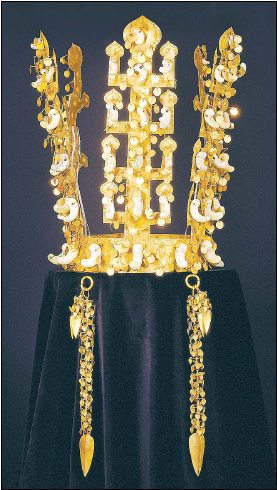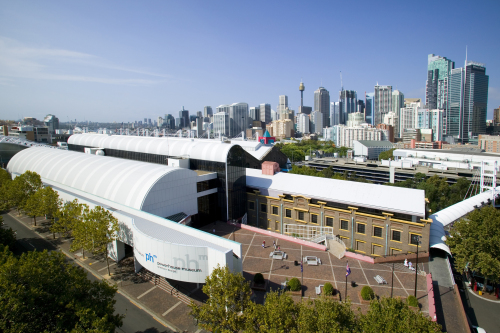The gold crown of Silla, excavated from the Cheonmachong, or “Heavenly Horse Tomb,” of the Silla Kingdom (57 B.C.― 935 A.D.), will make its first overseas trip in October.
The National Treasure No. 188, currently kept at the Gyeongju National Museum, will be shown at the Powerhouse Museum in Sydney as part of an upcoming exhibition on Korea’s metal crafts.
The National Treasure No. 188, currently kept at the Gyeongju National Museum, will be shown at the Powerhouse Museum in Sydney as part of an upcoming exhibition on Korea’s metal crafts.

The museum plans to hold the “Spirit of Jang-in: Treasures of Korean Metal Craft” exhibition from Oct. 27 to Feb. 26, to celebrate the 50th year of friendship between Korea and Australia.
Other historical objects being flown to Sydney on loan from the National Museum of Korea and Leeum, Samsung Museum of Art include a belt, a gold necklace and earrings from the Silla Kingdom.
Powerhouse Museum chose metal as the major focus, as iron is one of Australia’s largest export items to Korea, Australia’s fourth-largest trading partner.

The exhibition will showcase not only traditional metal crafts but contemporary metal artwork, which will be sourced from the Powerhouse Museum collection and selected artists in Korea and Australia.
“Korea has much to show many developing countries and developed countries how to pursue and be successful at development, at the same time, maintaining cultural heritage,” Dawn Casey, director of Powerhouse Museum, Sydney, told reporters in Seoul.
“The exhibition represents, for our museum, the traditional cultural heritage of Korea’s excellent and beautiful metal craft, taken to contemporary metal craft.”
The exhibition will consist of several sections, from how first metal craft was produced in Korea during the Bronze Age to how gold was used by the royalty during the Three Kingdoms period to how Buddhism influenced metal craft in Goryeo Dynasty. Daily life of Joseon Dynasty (1392-1910) will also be featured through everyday metal items.
Other sections will showcase how the practice Korean metal craft was lost during the Japanese colonial period (1910-1945) and the Korean War (1950-1953), but was revived in contemporary artworks including those by Lee Byong-hoon.
Powerhouse Museum, which attracted 6.8 million visitors in 2009 and 2010, held two exhibitions on Korean culture in the past ― Korean textile and costume in 1998 and Korean pottery as part of the Sydney Olympic art festival in 2000.
Casey expected the four-month exhibition to draw about 400,000 visitors as the museum went through a large-scale renovation in the past year and October-February period is a summer season for Australia.
She said the exhibition, in particular, will draw interest from Australian university students majoring in design.
Noting that the exhibition costs about A$1 million ($1.08 million), Casey said she will seek sponsorship from Korean companies doing business in Australia.
Under the agreement between the National Museum of Korea and Powerhouse Museum, the National Museum of Korea will cover the expense for transporting the historical artworks, said Lee Hyoung-ho, senior residence fellow at Powerhouse Museum.
In return for the upcoming Powerhouse Museum exhibition, the National Museum of Korea will hold an exhibition on Australia’s aboriginal culture in 2013, he said.
By Kim Yoon-mi (yoonmi@heraldcorp.com)






![[KH Explains] How should Korea adjust its trade defenses against Chinese EVs?](http://res.heraldm.com/phpwas/restmb_idxmake.php?idx=644&simg=/content/image/2024/04/15/20240415050562_0.jpg&u=20240415144419)











![[Today’s K-pop] Stray Kids to return soon: report](http://res.heraldm.com/phpwas/restmb_idxmake.php?idx=642&simg=/content/image/2024/04/16/20240416050713_0.jpg&u=)